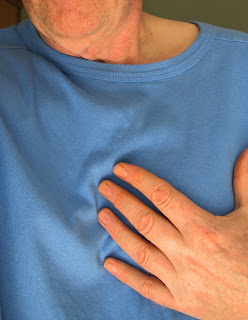
There is also the saying,
"Water is life." Without water, human life can not be imagined. Humans are engaged in exploring water from the moon to the surface of Mars, so that they can be searched for the possibilities of life, but do we understand the real value of water living on earth?
According to the
2011 census, the national cleanliness coverage is 46.9 percent, whereas in rural areas, the average is only 30.7 percent. Still, the country's total population of 62.2 million, i.e. the national average, 53.1 percent of the people are exposed to the open.
These statistics not only include rural but also urban areas. This is a major reason for water pollution. However, efforts are being made to solve this problem under the sanitation campaign by the government. In fact, water purification is also important because through it the nutrients such as vitamins, minerals and glucose in the entire body are affected. If the body does not get clean water then how will the body be
healthy?
Anyway a healthy person should take at least 12 glasses of pure water every day. Water purity is not necessary in many people's eyes. But this thought can prove to be dangerous for you and your family. The purity of water from the bath water to the drinking water matters. Where the impure water gets skin-related disorders. If you think of statistics, there are about
2100 toxic elements in drinking water. In such a situation, it is in this condition that it should be completely purified before using water, because there is caution in safety itself.
According to a report related to health, one child dies every five seconds with water related illness. Every year, more than 50 lakh people become unhealthy due to unhealthy drinking water, unclean home environment and diseases associated with improper disposal of excrement.
Nearly one billion people around the world are not getting clean water yet and more than two billion people do not have enough facilities for excreta disposal. In such a situation, the pure drinking water crisis is also a challenge. To cope with this challenge, all have to participate in their level.
According to a report submitted by the World Health Organization on a decade in 1992, 133.9 billion American dollars were invested on water and sanitation during the period
1981-1990, 55 percent of which was cleaned on water and 45 percent was sanitized. spent on.
WHO estimates that on providing supply of water to the urban areas, the average cost per capita is US $ 105 and 50 US dollars in rural areas, while on average, the average urban US $ 145 in urban areas and 30 US dollars for rural areas It comes.
- Quality of drinking water
If we talk about the quality of drinking water, it has been divided into two parts: one chemical, physical and another microbiologist. Heavy metals in chemical and physical parameters are to detect organic compounds, remove solid substances (
TSS) and turbidity (turbidity), then in microbiology, specific bacterial species of coliform bacteria, e coli and bacteria eliminate viruses and protozoan parasites. is. If chemically, if the quantity of nitrate, nitrite and arsenic exceeds the fixed deadline, health is affected. Such toxic elements also affect our health through access to our body through water.
The major of these toxic elements are cadmium,
lead, mercury, nickel, silver, arsenic etc. Water, iron, manganese, calcium, barium, chromium, copper, cilium, uranium, boron, as well as excess of nitrate, sulphate, borate, carbonate etc. have adverse effects on human health. High intensities of magnesium and sulphate in water cause intestinal irritation. The excess of nitrate leads to the disease called methemoglobinemia in children. Metahimoglobinemia penetrates into the intestines, causing the stomach cancer by turning into nitrosoemine, there is a disease called fluorosis from Plurine. Similarly, the insecticides and fertilizers used in the agricultural sector pollute our water bodies.
According to the
WHO, drinking water should be such that it is clean, soft, flavored and odorless. The pH value is between 7 and 8.5
Harmful substances present in water: mercury, copper, lead, cadmium, seninium, barium, nitrides, fluorides and sulphides.
Valid Status of Arsenic Level in Water:
Indian Standards Bureau has considered 0.05 milligrams per liter suitable for human life, whereas WHO i.e., the World Health Organization has a maximum of 0.01 milligrams of arsenic in one liter per liter of drinking water to a degree Considered safe standards.
Dangers from Arsenic: If the amount of arsenic in water is dangerous, then there are incurable diseases like cancer, liver fibrosis, hyper pigmentation. According to a report of the Parliamentary Committee, in the last decade, more than one lakh people died in the face of arsenic-rich ground water.
Diseases related to waterborne diseases: Diseases such as endoscarsisitis, trypanosomasis and yellow fever are promoted.
- Influence on future generation

Only talk about your own country, more than 20 per cent of children aged 14 years of age are either sick or killed due to unsafe water, insufficient hygiene or insufficient hygiene. Similarly, 90 percent of deaths due to diarrhea caused by lack of cleanliness are children under five years of age. According to the report of the year
2013-14, there were no separate toilets for girls in nearly 20 percent of primary schools in the country. However, the current government claims that there has been a provision of toilets in all the schools. But there is no information available on how many percent of these toilets are used. The most important thing is that the toilets in the schools are not properly operated and because of the mess they are in worse
condition than the toilets in the open.
- 13 lakh children die every year
13.6 lakh children die every year in India. In this, about two
lakh children die due to diarrhea. However, infant mortality rate (
IMR) in India and infant mortality rate below five years is continuously decreasing. According to WHO's 2012 statistics, 11% of deaths in infants under five years of age are due to diarrhea every year. Keeping an estimate in mind, clean drinking water and better sanitation should be provided, one child can be saved in every 20 seconds. Also, rapidly increasing infant mortality can be reduced.
1. Viruses: jaundice, polio,
gastro-intitis, colds, smallpox.
2. Bacteria: Diarrhea, dysentery, premature fever, superfluous, cholera, cough cough, gonorrhea, syphilis, gastroenteritis, inflammation, convulsions, tuberculosis.
3. Protozoa: Pairia, dysentery, insomnia, malaria, amebiosis, gyne diarrhea, gyne diabetes.
4. Worm: Various types of worms in the filariasis, hydrated syst Disease and stomach, which have a bad effect on health.
- Due to unavailability of drinking water
On the situation of India, on an average every year 33 million people are affected by waterborne diseases ie collar, polio, dysentery, typhoid and hepatitis with contaminated water, and about 1.5 million children die due to diarrhea alone. Apart from this, 6 million 60 million from diseases caused by fluoride and arsenic in water, such as
fluorosis, 10 million in cancer and a large number of people are affected annually by skin diseases.
According to the National Family Health Survey 2005-06, almost half of the urban households supply pipes in the house. More than 80 percent of urban poor families are kept filled with tapes, handpumps or other sources which are mostly contaminated already. India comes in 120th position out of
122 countries in terms of quality of water. In order to provide drinking water, Ministry of Water Resources, Ministry of Urban Development and Poverty Alleviation,
Ministry of Health and Family Welfare, Central Pollution Control Board,
Municipal Body and National and International Development Institutes perform various roles. Even after this, it is a challenge to provide pure and standard water to the people.
- Major remedies for purifying water
Water purification of water: To destroy the bacteria in water, prepare 2 slurry tablets (500 mg) in 15 liters or 3 grams of bleaching powder in every
1,000 liters of water and put it in half an hour after planting.
RO system: RO system has been used as a key area in the field of technology. RO system reduces the risk of getting bacteria in clean water. This is a high way to clean drinking water. Ro system cleaned water from 220 to 240 ppm to 25 ppm. It makes the water pure and sweeter free from dirt, dust, bacteria etc.
UV radiation system: The DNA of viruses and bacteria present in the water from the UV radiation system becomes disorganized. Also harmful bacteria also die.
UV purifiers come in three-four purification steps, which are sediment filters, which are the pre-filter process and the active carbon cartridge. It excludes moss, organic particles, soluble solids, bacteria, viruses and heavy elements from water.

Boiling water: There are many ways to make the water clean and potable, but boiling it is the oldest way to clean water. Millions of people adopt this traditional way around the world. To make the water completely clean and disinfect, boil it at least 20 minutes and keep it in a clean container, whose mouth is narrower so that there is no dirt in it. Boiled water is considered to be the best.
Candle water filter: Another way to clean water is to use candle water filter. There is a need to change the candle from time to time, so that water can be better cleaned.
Multistage purification: Multistage purification is a better way to clean water. The water is clean in many phases. The first pre-filter
purification occurs, after which activated carbon purification is done, then the water is removed from the harmful bacteria and at the end it is better to maintain the quality of water.
Chlorination: Water can also be cleaned through chlorination. This process is being adopted in various cities and government undertakings during the water supply. As the water purifies, its color and aroma also change. It prevents harmful bacteria present in the water.
Halogen tablet: Hazelon tablet is useful to clean water in casual conditions. How much of it should be put into the water, it depends on the quantity of water and the brand of haljon tablet. These pills are completely soluble in water.
- Water crisis in the future
Increasing population is the cause of pollution, there are no two opinions in it. In the coming time, the problem of drinking water will increase as per the demand of increasing population. At the same time, water will be stopped on one side of the dams and will give birth to problems like
Tehri, then the displacement of large population will affect entire ecosystem itself. Due to water accumulation in a particular area, there will be many waterborne diseases. It will also be a challenge to deal with all diseases caused by
waterlogging.
To save the future, it will have to be ready now. All types of pollution are connected to each other. In this case, keeping in view the future, whatever tomorrow-factories are established in future, they should be away from the
population. The contaminated water released from these tomorrow-factories must be destroyed very well before getting into our water bodies, rivers, streams, ponds.
Everyone needs to come forward to avoid water pollution: There is no pollution in the water, there is a community level solution for this. Do not allow pollution of water near the hand pump. Put bleaching powder regularly in open well water. Keep cleanliness around the water tank



































